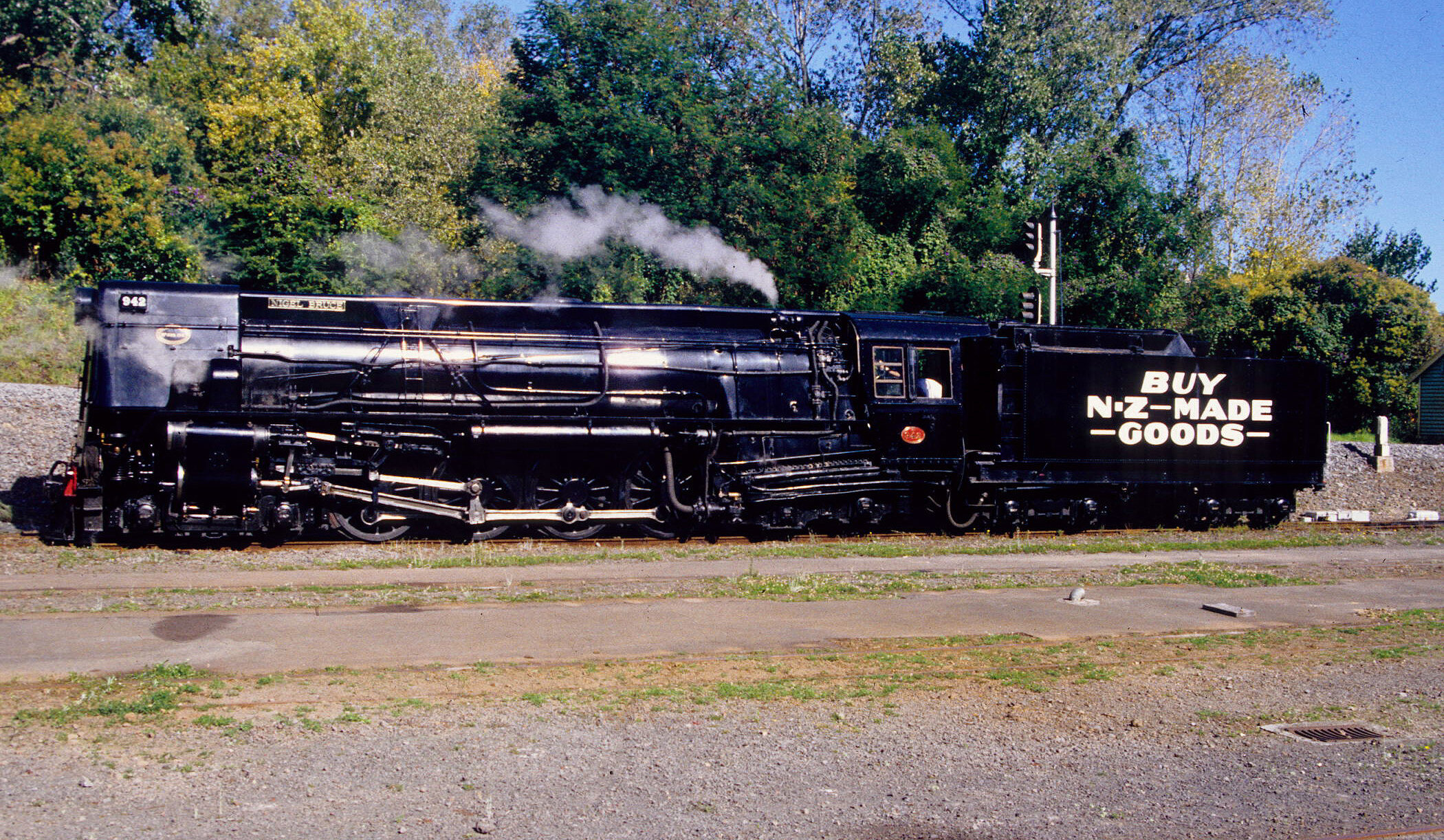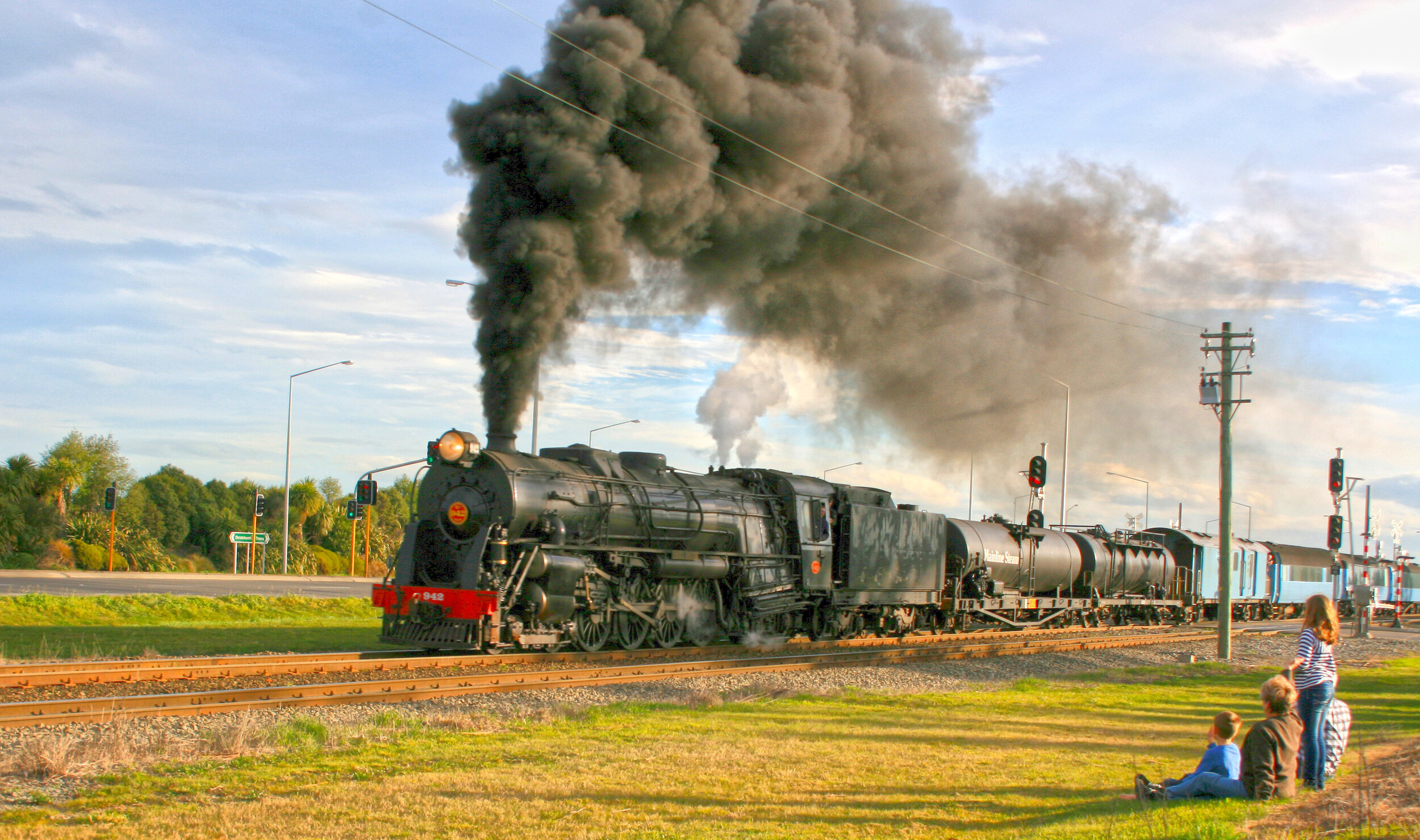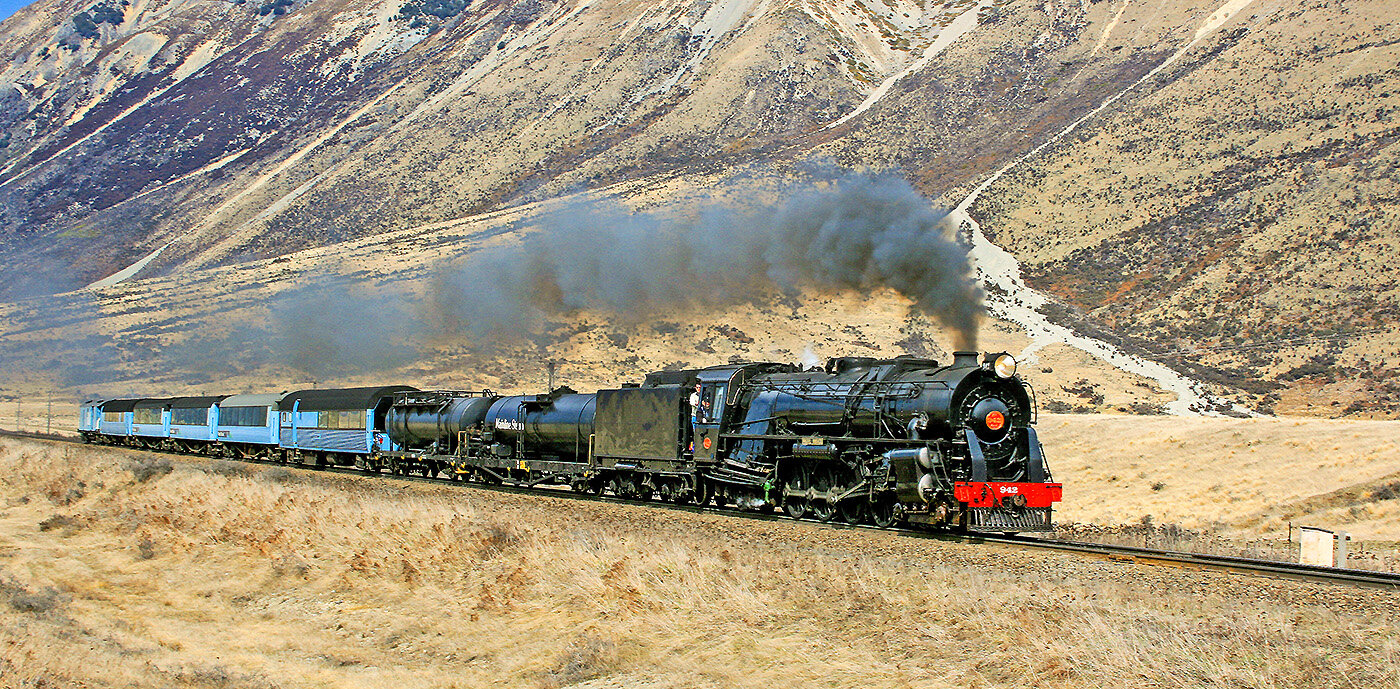Ka942
Ka942
Details
Wheel Arrangement: 4-8-4
Manufacturer: NZ Railways, 1940
Builders Number: 325/1940
Valve Gear: Walschaerts
Cylinders: 20” dia. / 26” stroke
Weight in working order: 135.6 tons
Driving Wheel Diameter: 54”
Boiler Pressure: 200 psi
Tractive Effort: 30,815 lbf
Overall Length: 69ft 8in
Ka 942 entered service in November 1940 and retired in July 1967 after running up 944,532 miles in service. (Ka 933 was the highest mileage Ka at retirement having clocked up 1,068,147 miles when it was withdrawn from service in October 1966)
Originally a coal burner, Ka942 was converted to oil at the Otahuhu Workshops in November 1948.
Ka 942 was one of 35 Ka type locomotives, an improvement on the K 4-8-4 design, and originally streamlined. Some of the improvements were the use of roller bearings on all axles instead of the bronze bushes that gave trouble on the thirty K class; and an altered frame arrangement, extending the firebox cradle casting to just behind the rear driving axle, reducing the amount of stress on the frame. The streamlining followed the world-wide trend, hut as the NZR had stringent minimum weight requirements, the streamlining, like that of the J class, was little more than a thin facade, not being incorporated into the main superstructure. The streamlining did have some aesthetic importance, however, hiding the mass of pipework, two tanks and two pumps associated with the ACFI feed water appliance, mounted on top of the boiler, the smokebox, and on the running boards. The feedwater pumps were eventually replaced by exhaust steam injectors in the late 1940’s, and the streamlining removed.
Ka 942 was completed at Hutt railway workshops in November 1940. It worked the North Island Main Trunk, initially based at Taihape. Whilst under overhaul in November 1948 the loco was altered to burn fuel oil instead of coal, the feed water pumps replaced with an exhaust steam injector and the streamlining removed. Oil was used as a fuel from the Second World War on, due to coal shortages, and the large firebox, at the limit for hand-firing on coal.
Still working the Main Trunk, Ka 942 was transferred to Frankton loco, Hamilton in 1958, staying there until withdrawn from service in August 1967, replaced by imported diesel locomotives.
Ka942 was towed to Hutt railway workshops, where it was planned to be used as a stationary boiler along with three K locos (including K 911), but was not required.
After considerable negotiation, Ka 942 was sold to Ian Welch in 1972 and towed to Steam Incorporated’s Paekakariki engine shed in March 1974. As the loco was not in running order when purchased, an overhaul programme was started. Parts were stripped from the boiler to enable its inspection, but before this could be completed, 942 was moved from Steam Incorporated to the Rail-Air shed, in the company of J 1211, in 1978. Overhaul slowly continued, but stopped altogether in 1986 following the sale of the Rail-Air shed to Steam Incorporated. The loco and five support vehicles were moved to Otaki, where they were a feature of the railway yard for over three years.
Following the return of J 1211 to mainline running in 1988, Ka 942 was towed north to Auckland for overhaul to mainline condition by Ted Pointon, Grant Hjorth and others. 942 was initially placed in the Auckland yard, but was moved to the Glenbrook Vintage Railway for overhaul in late 1989.
Until Ka 942 started operating in the South Island with Mainline Steam the only other Ka to venture south of Cook Straight was 944 which was transferred there between 1957 and 1959. As far as is known it was never operated on a train due to crewing problems and was returned to the North Island.
Ka942 climbs Cass Bank on the Midland Line with an excursion train.
Ka942 thunders up Arthurs Pass in a heavy snowstorm.
Ka942 is almost at Arthurs Pass as it crosses Bealey Bridge. D. Houston photo.






